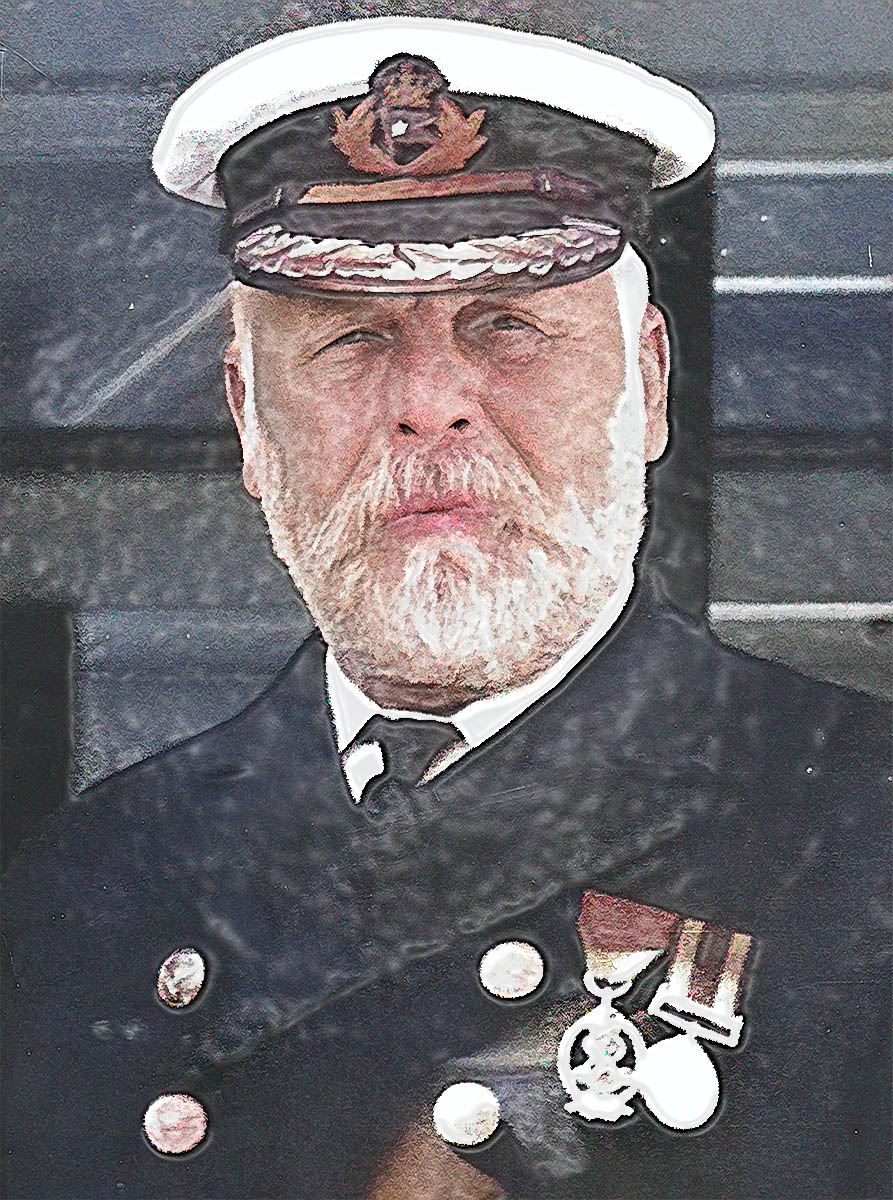
What were Captain Smith’s last words
Captain Edward Smith: The Titanic’s Gentleman Commander
On a cold April night in 1912, the “unsinkable” RMS Titanic slipped beneath the icy waves of the North Atlantic, taking with it over 1,500 souls. Among them was Captain Edward John Smith, a seasoned seafarer whose fate became inextricably tied to one of the greatest maritime disasters in history.
Captain Edward Smith, often called the “Millionaire’s Captain,” was widely respected in the shipping world for his steady command and composed demeanor. But in the aftermath of the Titanic’s sinking, questions swirled: What did he do to try and save the doomed liner? Was he to blame? And in his final moments, was he a hero, or a man overwhelmed by the weight of impossible choices?
The Making of a Captain: Edward John Smith
Born on January 27, 1850, in Hanley, Staffordshire, England, Edward Smith began his career modestly. He was the son of a pottery presser and entered the merchant marine at age 17. He quickly rose through the ranks, earning his master’s certificate in 1888. His career took a significant turn when he joined the White Star Line, one of the most prestigious passenger shipping companies of the era.
By the early 1900s, Smith had become a favorite among elite travelers, known for his calm authority, naval experience, and gentlemanly nature. He had commanded several of White Star’s most prominent ships, including the Majestic, Baltic, Adriatic, and Olympic. By the time he was assigned to the Titanic, Smith had over 40 years of maritime experience and was regarded as the line’s most reliable and dignified captain.
White Star Line even used him as a marketing point, advertising him as the captain for those who desired the safest and most luxurious transatlantic crossing.
April 10, 1912: Titanic Sets Sail
On April 10, 1912, the Titanic departed Southampton on its maiden voyage to New York City. It was a ship of superlatives: the largest, the most luxurious, and considered “virtually unsinkable” due to its watertight compartments and state-of-the-art design. Captain Smith, then 62 years old, was in charge of what was expected to be a crowning achievement in his career. He had announced this would be his final voyage before retirement.
The ship carried more than 2,200 passengers and crew. Onboard were some of the wealthiest people in the world, including John Jacob Astor IV, Isidor Straus, and Benjamin Guggenheim, alongside hundreds of immigrants hoping for a new life in America.
April 14, 1912: The Iceberg and the Aftermath
The Titanic steamed ahead at near-full speed despite multiple iceberg warnings from other ships. That fateful Sunday evening, lookout Frederick Fleet spotted an iceberg directly in the ship’s path. At 11:40 p.m., Titanic struck the iceberg on her starboard side.
The collision tore open a series of compartments below the waterline. Though the damage didn’t look catastrophic on the surface, the ship was fatally compromised. Within two hours and forty minutes, the Titanic would be gone.
Captain Smith acted swiftly but faced an unprecedented crisis. His first move was to assess the damage with shipbuilder Thomas Andrews, who soon delivered the grave prognosis: the ship would sink, and not all passengers could be saved.
Captain Smith’s Efforts to Save the Titanic
As panic loomed, Captain Smith took a series of steps that demonstrated leadership and a commitment to saving as many lives as possible:
Distress Calls: Smith ordered radio operators Jack Phillips and Harold Bride to begin sending out CQD (and later SOS) signals, alerting nearby ships, including the Carpathia.
Life Boats: Despite being under-equipped with lifeboats (Titanic had only 20, enough for about half those onboard), Smith supervised the difficult process of loading women and children first, trying to maintain order.
Personal Intervention: Survivors reported seeing Captain Smith walking the decks, urging calm, helping passengers to boats, and even yelling, “Be British, boys, be British!” to the crew, encouraging them to act with dignity.
Opening Gangways: At one point, he tried to open the gangway doors to allow more access to boats, although this effort was ultimately fruitless as lifeboats were already launched.
Despite his efforts, many lifeboats were launched partially full due to confusion and disbelief among passengers.
The Final Moments of a Captain
Captain Edward Smith’s final moments are clouded by conflicting reports, but they share a tone of calm resignation. Multiple survivor accounts suggest he declined a place on a lifeboat, choosing instead to stay with his ship.
Some accounts say he was last seen on the bridge, standing silently as waves crashed over the deck. Others claim he was in the wheelhouse or helping others until the very end. According to one report, his final words were:
“Well boys, you’ve done your duty and done it well. I ask no more of you. I release you. You know the rule of the sea. It’s every man for himself now, and God bless you.”
Another often-quoted phrase attributed to him is:
“Be British.”
However, due to the chaos and trauma of the moment, exact quotes are debated.
Captain Smith is believed to have gone down with the ship around 2:20 a.m. on April 15, 1912. He was 62 years old.
Was Captain Smith a Hero?
In the aftermath, many hailed Smith as a hero who maintained order, stayed calm, and upheld maritime tradition by remaining with his ship. He was memorialized in songs, poems, and statues across Britain.
Yet others questioned his actions, or inactions. Why had Titanic continued at high speed despite iceberg warnings? Why were lifeboats underfilled? And why hadn’t there been a proper lifeboat drill?
Was Captain Smith to Blame for the Sinking?
Assigning blame in a tragedy of this magnitude is complex. However, critics have identified several factors in which Captain Smith may have erred:
Speed: The Titanic was traveling at nearly 22.5 knots, close to top speed, despite iceberg warnings. Smith may have been attempting to reach New York ahead of schedule, a prestige move for the ship’s maiden voyage.
Ice Warnings Ignored: The Titanic received multiple iceberg warnings, including from the Mesaba and the Californian, but these were not treated with sufficient caution.
Lifeboat Preparedness: A lifeboat drill scheduled for April 14 was canceled. If executed, it might have saved more lives through better coordination.
Insufficient Lifeboats: Though not his design choice, Smith could have challenged the Board of Trade regulations or White Star Line policies that allowed Titanic to sail with only 20 lifeboats.
That said, maritime culture at the time often emphasized speed, and Smith’s behavior wasn’t unusual by those standards. Ultimately, blame also lies with the shipbuilders, White Star Line executives, and outdated safety regulations.
Where Is Captain Edward Smith Buried?
Captain Smith’s body was never recovered. Like so many who perished in the icy Atlantic, he was lost at sea. Memorials to him stand in several places, including:
Beacon Park, Lichfield, Staffordshire – A statue was erected in 1914 in his honor.
Hanley, Stoke-on-Trent – His birthplace features a plaque and memorial.
Though he has no grave, Captain Edward Smith is remembered through these monuments and the collective memory of the Titanic tragedy.
Tragedy, Myth, and the Man Behind the Uniform
Over a century later, Captain Edward Smith remains a figure both mourned and scrutinized. In many ways, he epitomized the Victorian ideal of a sea captain: composed, brave, and loyal to the end. But the Titanic’s sinking also marked the end of an era, the end of unshakable faith in technology, class divisions at sea, and the illusion of total safety.
Smith’s legacy is paradoxical. He was both a veteran mariner and a man out of time, facing a modern disaster with outdated assumptions. While his inaction on ice warnings and lifeboat drills casts a shadow, his refusal to abandon ship and his efforts to save others speak of honor and duty.
Captain Edward John Smith, a man once hailed as a model of maritime excellence, became a tragic symbol of hubris and humanity on the night of April 14, 1912. He went down with his ship, his final command, and whether by tradition, honor, or sheer helplessness, his fate became one with that of the Titanic.
Was he a hero? A scapegoat? A flawed man doing his best in the face of doom?
Perhaps he was all of these things. But what is certain is that Captain Smith’s story continues to captivate, reminding us not only of what was lost on that cold April night, but of the human choices, noble and tragic, made in the face of disaster.
